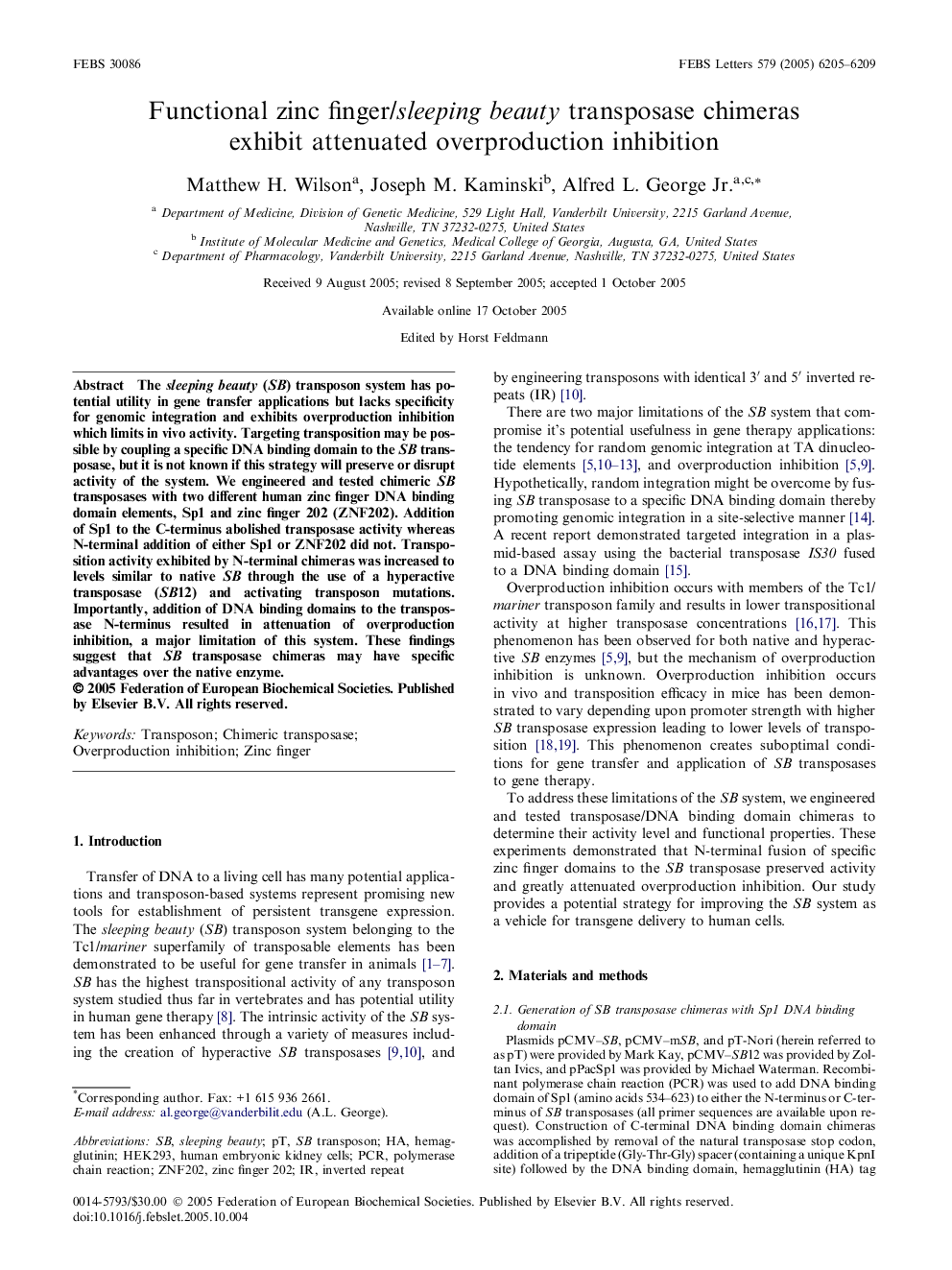| Article ID | Journal | Published Year | Pages | File Type |
|---|---|---|---|---|
| 2051965 | FEBS Letters | 2005 | 5 Pages |
The sleeping beauty (SB) transposon system has potential utility in gene transfer applications but lacks specificity for genomic integration and exhibits overproduction inhibition which limits in vivo activity. Targeting transposition may be possible by coupling a specific DNA binding domain to the SB transposase, but it is not known if this strategy will preserve or disrupt activity of the system. We engineered and tested chimeric SB transposases with two different human zinc finger DNA binding domain elements, Sp1 and zinc finger 202 (ZNF202). Addition of Sp1 to the C-terminus abolished transposase activity whereas N-terminal addition of either Sp1 or ZNF202 did not. Transposition activity exhibited by N-terminal chimeras was increased to levels similar to native SB through the use of a hyperactive transposase (SB12) and activating transposon mutations. Importantly, addition of DNA binding domains to the transposase N-terminus resulted in attenuation of overproduction inhibition, a major limitation of this system. These findings suggest that SB transposase chimeras may have specific advantages over the native enzyme.
